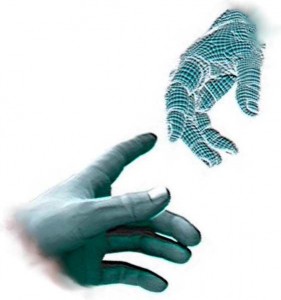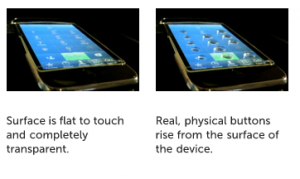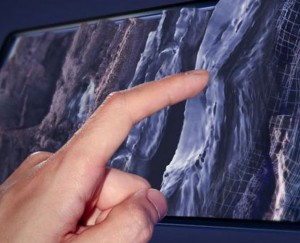Haptics: Transmitting Touch Via the Internet
Long distance communication has come a long way in the last 150 years. In 1860, the first pony express sent a hand-written message 200 miles per day on horseback. Not even two years later, the foundation was laid for the telegraph to send long distance messages seemingly instantaneously. While it must’ve seemed amazing at the time, it was still a very impersonal form of communication; we still weren’t able to use any of our five senses to communicate.
The telegraph led to the telephone, which amazingly opened our ears and let us hear a loved one’s voice from an incredible distance. Phone lines eventually enabled us to connect to the internet, and we can now not only hear each other, but see eachother in real time from anywhere in the world. The ongoing evolution continues to make long distance communication as personal as ever. The next natural step is to implement another one of the five senses into the equation; in this case, the ability to touch or feel someone via the internet. That possibility is closer than you think.
A field called haptics is enabling us to simulate the feeling of touch electronically. This is happening in a multitude of ways. Any type of physical electronic interaction falls under the category of haptics. A vibration when you touch your screen is haptics; but that is just the beginning. We will soon have devices made available to us with screens that allow you to feel textures! A company called Tactus is installing a small layer of liquid or gas into it’s screens that gives a 3D feel to your smart devices. A keyboard or controller can instantaneously appear on your screen. A flat surface can instantaneously provide “buttons when you need them, gone when you don’t.”
Here’s a descripton of the concept from Tactus’ website: “What if buttons could morph out of the surface of your device? Tactus Technology has developed a new tactile user interface for touchscreen devices that does exactly that. Tactus provides a new dimension to touchscreens by enabling real, physical buttons that rise up from the surface on demand, and then recede back into the screen, leaving a perfectly flat, transparent surface when gone.” Apple seems to think this technology is a good idea as well, filing patents on haptic technology this week.
A similar company called Senseg is creating technology that lets you feel products on the screen before buying them. Your phone or tablet screen can get as hard as a rock, or as smooth as silk. Senseg has created an interface based on electrical charges that can deliver attractive forces to your finger. These forces are able to simulate textures, edges, and vibrations. Marketers will be able to communicate their product offering as effectively as ever before, and we’ll be able to feel the world around us from our homes.
The evolution of long distance communication and interaction has led to another frontier: controlled touch from one user to another online. A company called Shadow Robot has introduced a dexterous hand that is able to move almost identically to that of a human. The commercially available invention features 40 air muscles that can do 24 different human-like movements. The dexterous hand is controlled by a glove worn by one user, where the other user would feel the resulting motions.
The dexterous hand can be yours for around $100K, but it’s not difficult to imagine the cost coming down dramatically in the future. With the dexterous hand, loved ones thousands of miles away will be able to hold hands, scratch backs, and give high fives. Here’s a cool video of the potential capabilities.
It’s easy to see where this technology could be creepy (chat rooms), but it’s similarly easy to see where it could be amazing (games, learning, interacting). The technology is in it’s infancy, so there’s a lot that can still happen, including implementing the ability to let both users feel, not just the one with the dexterous hand. That could happen through a haptic screen interface, but also using potential future touch sensing technologies.
Less than two centuries ago, we couldn’t use any of our senses to communicate at any sizable distance. With long distance communication using our ears and eyes now finally commonplace, and touch amazingly on the horizon, could smell and taste be next? That’s a topic for another time, but get ready for this fascinating technology to soon be a part of our lives. Your thoughts?
Comments
Tags: dexterous hand, evolution of communication, evolution of technology, haptic technology, haptics, internet touch, senseg, shadow hand, tactus
Trackback from your site.




Comments (1)
Observer
| #
Interesting but hard to get my head around how this would be possible.
Reply